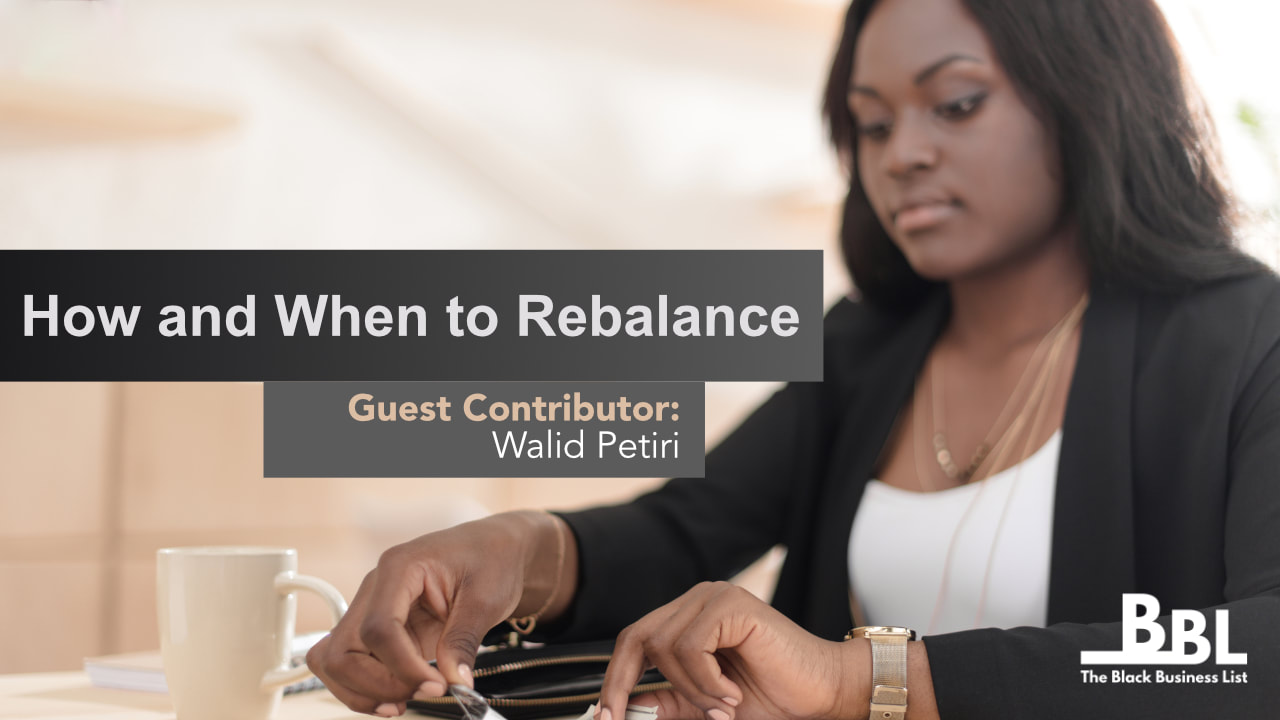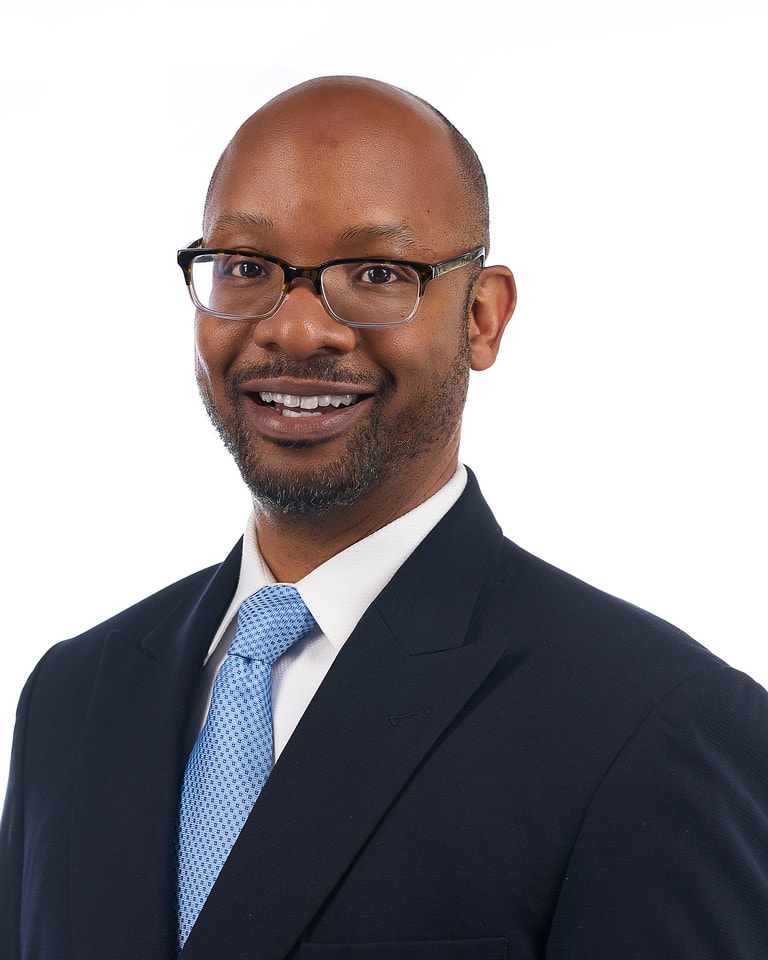|
(Staff Report)
We are very proud to announce that Michelle Perkins will be joining BlackBusinessList.Com in the role of Executive Vice President. Ms. Perkins will be heading up training and educational events for our over 2,000 Black entrepreneurs who are members of our organization. Shelly is a Los Angeles, California native and has worked with underserved and economically disadvantaged youth and families as a special education teacher, district education administrator, young adult counselor-mentor, curriculum developer, and community outreach organizer for 20 years. She holds a B.S degree in Justice Studies, two Master's degrees in education and community leadership and is currently pursuing a Ph.D. in Clinical Christian Counseling. We are excited to have her join the team and help take BlackBusinessList.Com to new heights.
0 Comments
By Walid Petiri, AAMS, RFC, (Guest Contributor) With the stock market reaching new all-time highs while continuing its longest bull market stampede in history, many investors are compelled to ask: How frequently should I rebalance my 401(k), IRA, 529 education plan or non-retirement portfolio? Though it’s a clear and specific question asked often in up, down or even flat markets, the answer is not nearly as clear cut. As illustrated in the Nobel Prize-winning work of University of Chicago finance professors Harry Markowitz and William Sharpe, asset allocation is the most important factor in determining the best long-term investment portfolio outcomes. Their study indicated that 91% of a portfolio’s positive performance was based on the right asset allocation. One common investing adage is that you subtract your age from 100 to find the percentage of your portfolio that you should keep in stocks. If you're 40, for instance, you should keep 60% of your portfolio in stocks. If you're 70, you should keep 30% of your portfolio in stocks. So today, with a more than 10-year climb in the U.S stock market specifically and with global equities as a whole having risen sharply since March of 2009, how and when do you rebalance. According to thebalance.com, lifestyle can also influence allocation. A widow with $1 million to invest and no other source of income will want a significant portion of her wealth in fixed-income obligations that will generate a steady source of retirement income for the rest of her life. A young corporate employee just out of college, on the other hand, will want to build wealth; she can ignore market fluctuations as she doesn’t depend on her investments to live day to day. First, though you should review your monthly statements for basic accuracy and your portfolio quarterly for performance measures and trends, asset allocation changes do not have one set rule. They blend science and art simultaneously. Timing and luck can matter, too. Notes The Retirement Researcher, a portfolio that was rebalanced every five years and that happened to have been rebalanced right before 2008 would’ve fared better than one rebalanced in 2004. (The portfolio that hadn’t been rebalanced in a while likely would have had a higher level of equities, and hence a more vulnerable composition when the bottom fell out of the market.) The Researcher recommends two approaches. The first is the time-based rebalancing, on a schedule. The other is the rebalancing band approach, which doesn’t rebalance until an asset class moves outside of pre-specified bands. Enter the science: Once you’ve established a good portfolio mix, as the portfolio asset classes move beyond 5% outside of target range – that is, you originally committed 40% to U.S stocks and the bull market now has your portfolio at 48% U.S. stocks – you need to take action. The art of this practice is when to take action – and how frequently? Some would advise rebalancing every quarter, back to your target ranges, and reviewing the overall portfolio every year for asset allocation changes. Others would say semi-annually is when rebalancing should occur; still, others would say annually rebalance your portfolio to start the year anew and review your asset allocation yearly. Make changes only when the markets clearly shift. The best answer for you is likely any or all of these. The most important part of the answer is that you consistently practice whichever rebalancing strategy you adopt. Whenever you rebalance there’s room for second-guessing, but discipline is your ally in the long term.
by Shaan Rais, Guest Contributor: Close your eyes and picture a successful brand. It can be any brand that springs to mind. What makes that brand unique? I really want you to think about this. Make a list of all the characteristics that come to mind. Now look at your list. What do you notice? I bet you can see immediately who might be attracted to this brand. You know what type of people--single men, strong mothers, divorced parents, teens--this brand appeals to. But do you know why it has this appeal? Successful brands know how to tell a story that speaks volumes to their target audience. You have a unique story too. Figure out how to tell your story and you’ll be unstoppable. But this is easier said than done, so let’s get into the strategy and psychology behind turning your story into a successful brand. The StrategyFiguring out why a company, an organization, a coach, a speaker, and/or a leader appeals to a certain group of people can be challenging. But the answer is all in the strategy. The key to success here is to tell your story in a way that moves people to action. As a motivational speaker, when I step onto that stage, my goal is to get every member of that audience to make a decision about me within the first 30 seconds. Love me or not, it doesn’t matter initially. All I want is some kind of response. Why? When an individual decides they love me right away, that makes them pay attention to what I say next. When an individual decides they don’t love me, that also makes them pay attention. We pay attention after we’ve made a decision because instinctively, we want to prove ourselves right. Do you know what you don’t want as a speaker or a coach? You don’t want to get on stage and have your audience feel “on the fence” or lukewarm about you because they’ll also prove themselves right about that. And--you guessed it--they won’t buy from you. Successful brands make this strategy work and ride it all the way to the bank. The PsychologyNow that we understand the basic strategy behind using story to move your audience to make a decision, let’s dig a little deeper into the psychology here. People also respond to brands and individuals who stand comfortably in their authenticity and truth. Go back to the successful brand I asked you to picture at the beginning of this article. Did you write “authentic” on your list of characteristics? I’ll bet you did--or something equivalent to it. There’s a good reason for this: almost everyone is hiding and creating complex marketing campaigns around masking their own vulnerabilities. But this is the easiest way to get lost in the noise of social media. On the other hand, if you can leverage your own vulnerability, you can tap into power your closest competition only dreams about. Remember, it’s your vulnerability that makes you human and real people relate to real people. So the key to building a successful brand and being a successful leader is self-awareness. Everyone has a unique story to tell. By identifying your story and the particular strengths you have to share with the world, you can leverage your past experiences to serve your clients. How do you turn your story into a successful brand with the elements I’m talking about? It starts with these seven steps:
If you’re ready, I’ll show you exactly how I used these seven steps to grow #brandedlikealeader to over $425K in less than 90 days. The next time I ask you to picture a successful brand, I want it to be your own!
Many people have slacked up from exercising at gyms because of the COVID-19 pandemic. Home work outs seem to be a much safer alternative to going to packed buildings full of people breathing hard and potentially spreading the coronavirus. SmakkFit fills an important gap in this dynamic. They offer home workout products on their website.
SmakkFit owner, and BlackBusinessList.Com member, LaMarqus Collins, is offering FREE shipping on orders over $45 to fellow BlackBusinessList.Com members. Exercise products make great holiday gifts. Visit their website to learn more about them: www.SmakkFit.com. |
Archives
November 2023
Find A Black Business Now!Join Us Now!Categories
All
|









 RSS Feed
RSS Feed